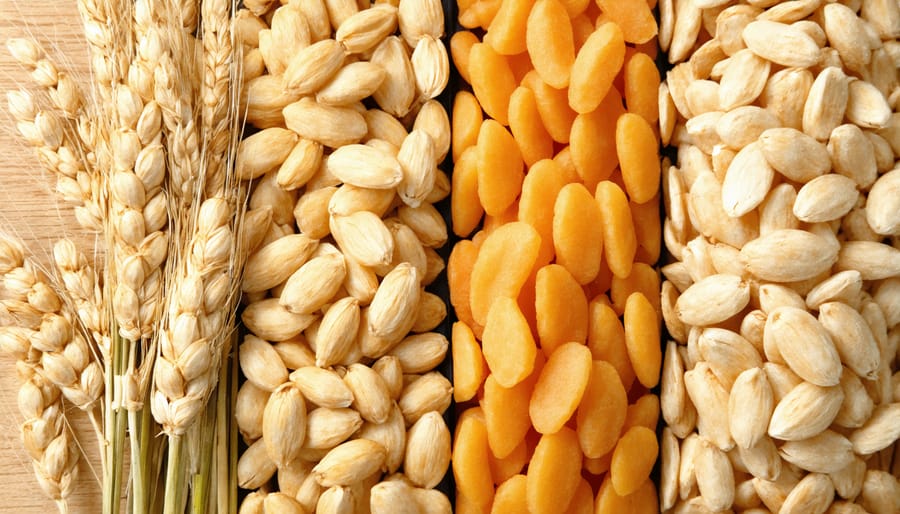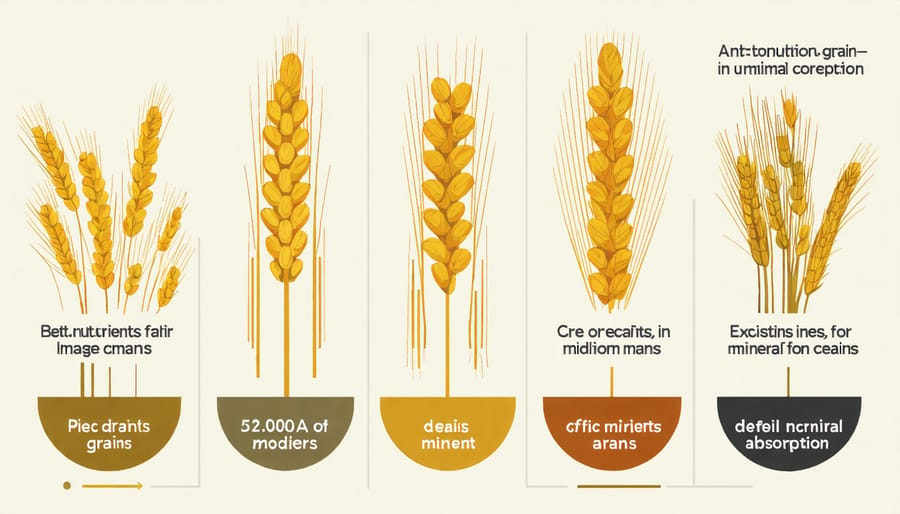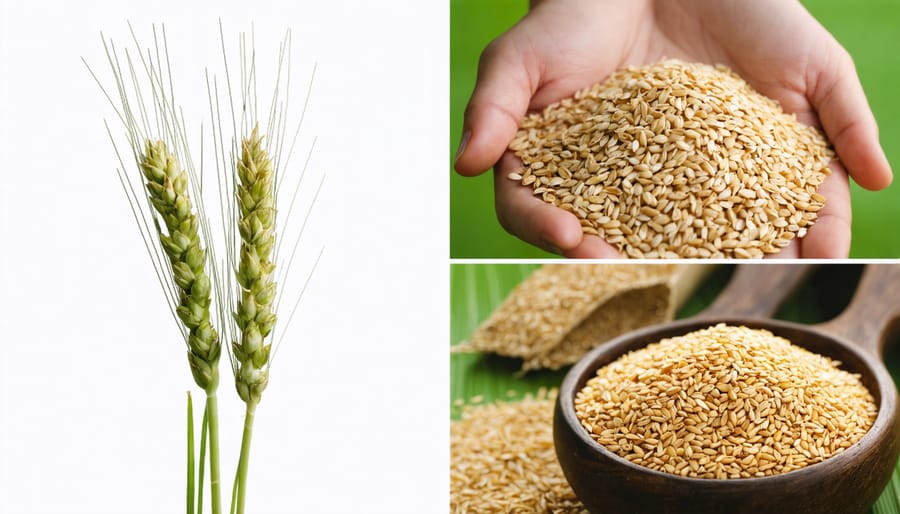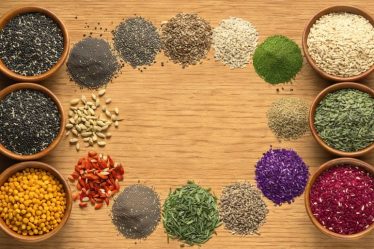
For decades, we’ve been told that whole grains are an essential part of a healthy diet – but emerging research suggests this widely-accepted nutrition advice might deserve a closer look. While whole grains offer more nutrients than their refined counterparts, they also contain potentially problematic compounds like phytic acid, lectins, and gluten that can interfere with nutrient absorption and trigger digestive issues in sensitive individuals. As someone who struggled with unexplained bloating and fatigue for years while faithfully following conventional whole grain recommendations, I understand the confusion and frustration around this topic. This article will explore the science-backed concerns about whole grains, examine who might benefit from limiting them, and offer practical alternatives for those seeking to optimize their nutrition. Whether you’re dealing with digestive issues or simply questioning traditional dietary wisdom, you’ll discover how to make informed decisions about whole grains that align with your unique health needs.
The Modern Whole Grain Dilemma

Not All Whole Grains Are Created Equal
When we talk about whole grains, it’s easy to think they’re all equally beneficial, but the reality is more nuanced. Some whole grains truly are nutritional powerhouses, while others might not deserve such high praise. For instance, ancient grains like quinoa and amaranth typically offer more protein and minerals than modern wheat varieties, even in their whole form.
I discovered this myself when switching from regular whole wheat bread to sprouted grain varieties – the difference in how I felt was remarkable! The key lies in factors like processing methods, growing conditions, and even the specific grain variety. Some whole grains have higher levels of antinutrients that can interfere with mineral absorption, while others are easier for our bodies to digest and utilize.
Take spelt and einkorn, for example. These ancient wheat varieties often cause fewer digestive issues than modern whole wheat, even for those who are sensitive to gluten. The lesson here? Instead of avoiding whole grains entirely, consider exploring different varieties to find what works best for your body. Your perfect grain match might just be waiting to be discovered!
Hidden Health Concerns
Anti-Nutrients and Digestive Issues
While whole grains are often praised for their nutritional value, they contain compounds called anti-nutrients that can sometimes cause digestive issues and affect nutrient absorption. I remember being puzzled when I first learned about this – after all, weren’t whole grains supposed to be super healthy?
Let’s talk about two main anti-nutrients: phytic acid and lectins. Phytic acid, sometimes called nature’s preservation system, can bind to important minerals like iron, zinc, and calcium, making them harder for our bodies to absorb. Think of it like a clingy friend who won’t let go – it holds onto these nutrients so tightly that they pass right through our digestive system.
Lectins, on the other hand, are proteins that can irritate the digestive tract. Some people are more sensitive to lectins than others, experiencing bloating, gas, or general digestive discomfort. It’s similar to how some of us can handle spicy food while others can’t – we’re all different!
But don’t panic! This doesn’t mean you need to completely avoid whole grains. Traditional preparation methods like soaking, sprouting, and fermenting can significantly reduce these anti-nutrients. Many cultures have intuitively developed these preparation techniques over generations. For example, soaking your oats overnight isn’t just trendy – it’s actually a smart way to make them more digestible and nutritious.

Blood Sugar Impact
When it comes to blood sugar management, not all whole grains are created equal. While we’ve long been told that whole grains are the healthier choice, some can cause significant spikes in blood sugar levels – something I discovered during my own wellness journey.
Many whole grain products, especially those that are finely ground, can be quickly broken down by our digestive system. This rapid digestion leads to faster glucose absorption, potentially causing blood sugar fluctuations that might leave you feeling tired, hungry, and craving more carbohydrates just hours after eating.
Take whole wheat bread, for instance. Its glycemic index can be surprisingly similar to white bread, sometimes even higher! This is why adopting a mindful eating approach becomes crucial when incorporating grains into your diet.
The good news? You can make smarter choices. Ancient grains like quinoa and steel-cut oats typically have a gentler impact on blood sugar levels. They’re less processed and contain more fiber, which slows down digestion and helps maintain steady energy levels throughout the day.
Consider pairing your whole grains with protein and healthy fats to further minimize blood sugar impacts. For example, adding almond butter to your morning toast or mixing seeds into your grain bowl can make a significant difference in how your body processes these foods.
Making Smarter Grain Choices
Traditional Preparation Methods
Remember when your grandmother insisted on soaking grains overnight? Turns out, she was onto something! Traditional cultures have long understood that proper grain preparation is key to making them more digestible and nutritious. I learned this the hard way after struggling with grain sensitivities until I discovered these time-tested methods.
Soaking grains in water with a splash of apple cider vinegar or lemon juice helps break down phytic acid, a compound that can interfere with mineral absorption. This simple step can make a world of difference in how your body processes these foods. I typically soak my grains for 8-12 hours before cooking, and many of my readers have reported feeling much better after adopting this practice.
Sprouting takes things a step further by activating the grain’s natural germination process. This not only reduces anti-nutrients but also increases vitamin content and makes nutrients more bioavailable. It’s like awakening the grain’s life force!
Fermentation, such as in traditional sourdough bread-making, is another powerful method. The fermentation process pre-digests the grains, making them easier on your digestive system while creating beneficial compounds. Plus, many people who can’t tolerate conventional bread find they can enjoy properly fermented sourdough without issues.

Better Alternatives
While whole grains might not work for everyone, there are plenty of nutritious alternatives that can better suit your body’s needs. Making personalized nutrition choices is key to finding what works best for you.
Consider incorporating ancient grains like quinoa, amaranth, or buckwheat – technically seeds rather than grains – which are typically easier to digest and packed with protein. I’ve found that switching to these options helped reduce the bloating I used to experience with traditional whole grains.
For those watching their carb intake, cauliflower rice and zucchini noodles make excellent grain-free alternatives. Sweet potatoes and butternut squash can satisfy that comforting carb craving while offering additional nutrients and fiber.
If you’re not ready to completely eliminate grains, try practicing mindful portion control. Start with smaller servings and pay attention to how your body responds. Some people find success with soaking or sprouting their grains before cooking, which can make them more digestible.
Remember, there’s no one-size-fits-all approach – what matters most is finding the balance that makes you feel your best.
While the concerns about whole grains deserve attention, it’s important to approach this topic with balance and personal consideration. As we’ve explored, certain individuals may experience difficulties with whole grain consumption, particularly those with gluten sensitivities or specific digestive issues. However, many people continue to thrive on whole grain-inclusive diets when consumed as part of a varied, nutritious eating plan.
The key takeaway isn’t to completely eliminate whole grains but rather to listen to your body and make informed choices. If you suspect whole grains might be affecting your health, consider working with a healthcare provider to determine the best approach for your unique situation. You might explore alternative grain options, proper preparation methods, or modified portions that work better for your body.
Remember, nutrition isn’t one-size-fits-all. What works wonderfully for one person might not suit another. The most important thing is to create a balanced diet that makes you feel energized, satisfied, and healthy. Trust your instincts, pay attention to how different foods make you feel, and adjust your diet accordingly.



